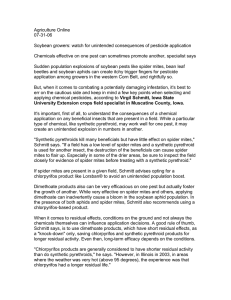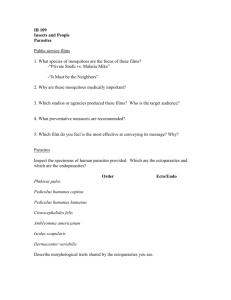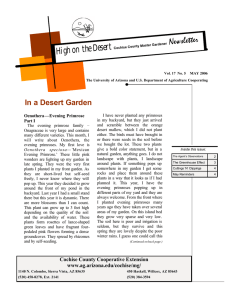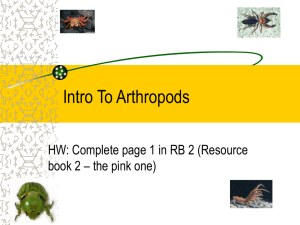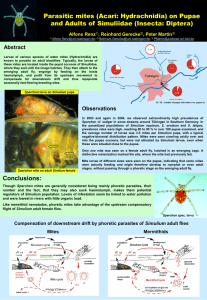Chemical Ecology
advertisement
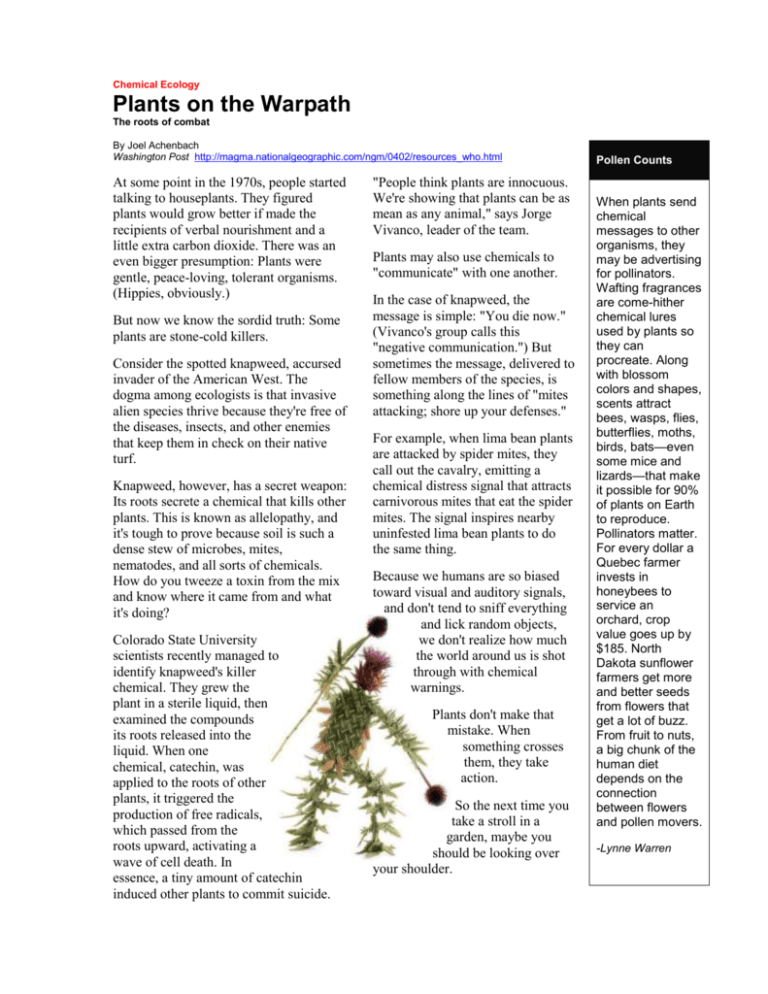
Chemical Ecology Plants on the Warpath The roots of combat By Joel Achenbach Washington Post http://magma.nationalgeographic.com/ngm/0402/resources_who.html At some point in the 1970s, people started talking to houseplants. They figured plants would grow better if made the recipients of verbal nourishment and a little extra carbon dioxide. There was an even bigger presumption: Plants were gentle, peace-loving, tolerant organisms. (Hippies, obviously.) But now we know the sordid truth: Some plants are stone-cold killers. Consider the spotted knapweed, accursed invader of the American West. The dogma among ecologists is that invasive alien species thrive because they're free of the diseases, insects, and other enemies that keep them in check on their native turf. Knapweed, however, has a secret weapon: Its roots secrete a chemical that kills other plants. This is known as allelopathy, and it's tough to prove because soil is such a dense stew of microbes, mites, nematodes, and all sorts of chemicals. How do you tweeze a toxin from the mix and know where it came from and what it's doing? Colorado State University scientists recently managed to identify knapweed's killer chemical. They grew the plant in a sterile liquid, then examined the compounds its roots released into the liquid. When one chemical, catechin, was applied to the roots of other plants, it triggered the production of free radicals, which passed from the roots upward, activating a wave of cell death. In essence, a tiny amount of catechin induced other plants to commit suicide. "People think plants are innocuous. We're showing that plants can be as mean as any animal," says Jorge Vivanco, leader of the team. Plants may also use chemicals to "communicate" with one another. In the case of knapweed, the message is simple: "You die now." (Vivanco's group calls this "negative communication.") But sometimes the message, delivered to fellow members of the species, is something along the lines of "mites attacking; shore up your defenses." For example, when lima bean plants are attacked by spider mites, they call out the cavalry, emitting a chemical distress signal that attracts carnivorous mites that eat the spider mites. The signal inspires nearby uninfested lima bean plants to do the same thing. Because we humans are so biased toward visual and auditory signals, and don't tend to sniff everything and lick random objects, we don't realize how much the world around us is shot through with chemical warnings. Plants don't make that mistake. When something crosses them, they take action. So the next time you take a stroll in a garden, maybe you should be looking over your shoulder. Pollen Counts When plants send chemical messages to other organisms, they may be advertising for pollinators. Wafting fragrances are come-hither chemical lures used by plants so they can procreate. Along with blossom colors and shapes, scents attract bees, wasps, flies, butterflies, moths, birds, bats—even some mice and lizards—that make it possible for 90% of plants on Earth to reproduce. Pollinators matter. For every dollar a Quebec farmer invests in honeybees to service an orchard, crop value goes up by $185. North Dakota sunflower farmers get more and better seeds from flowers that get a lot of buzz. From fruit to nuts, a big chunk of the human diet depends on the connection between flowers and pollen movers. -Lynne Warren PLANTS ON THE WARPATH Are the sentences below true or false? 1. In the 1970s people understood what plants needed to grow better. 2. Some ecologists believe that some species of plant survive because the place where they grow is free of diseases and insects. 3. Microbes and chemicals in the soil prevent knapweed from using the chemical in its roots to kill other plants. 4. The chemical catechin caused a chemical reaction in other plants, which made them die. 5. Sometimes plants send chemical messages to each other to protect themselves from insects. 6. Spider mites send out a chemical message that makes carnivorous mites come and eat them. 7. Lima bean plants, which are not being attacked by spider mites, protect themselves chemically against attack. 8. Our senses prevent us from seeing how plants communicate chemically. 9. Many types of animals and insects reproduce near plants because sthey are attracted by the smells those plants produce. 10. Farmers in Quebec and North Dakota use honey bees to increase the value and output of their crops.



